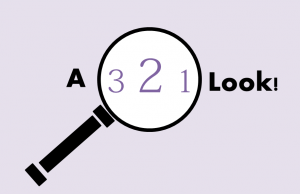For this 3-2-1, we’ll look closely at George Stubbs’ painting “A Lion Attacking a Horse”. The piece is hanging in the Library Court on the Second Floor of the YCBA. Stubbs painted this in 1762.
3 important observations about this painting:
- The animals’ bodies are incredibly detailed. The horse’s muscles and the lion’s claws are lifelike In order to best paint the lion and horse, he studied caged lions at the Tower of London, and observed horses in the English countryside.
- The painting captures movement. Stubbs shows motion through the horse’s wobbly back leg and wildly flailing hair and in the lion’s high tail ad sturdy posture.
- The subject of the piece is symbolic. Many paintings of lions attacking horses were created; many were made in ancient Rome, and Greece far before Stubb’s day. But in the 18th century, artists returned to the image. In fact, Stubbs made seventeen works on the subject.
2 major takeaways from this painting:
- The detail of the horse and lion’s bodies is based on values of the time. . During the time this painting was made, later called romantic period in Europe, artists became really focused on studying the details of the human body in order to capture its’ beauty. Stubbs used the same detail and care when painting the bodies of the horse and lion in this painting. In following this same technique that other artists used on humans, Stubbs makes us think about the differences between animals and men.
- Stubbs adds new meaning to this symbolic image of a horse attacking a lion. In Ancient Rome, the lion attacking the horse represented the Roman’s ferocity and domination. In other cultures, the horse’s demise represented the destruction of beauty. In this painting, and in his 16 others, Stubbs recreates an image from hundreds of years before in modern time. In doing so, he asked those viewing his piece to think about how 18th century society was similar or different from ancient society.
1 activity to engage students:
- Two- Color Sketch: students will understand the struggle between ferocity and beauty by sketching the animals’ movements in this painting.
- Materials: One piece of paper and two different colored pencils per student, hard surfaces.
- Instructions:
- First, briefly introduce the painting, naming the artist, time period, and the significance of the imagery (depending on age of students, choose to explain that the lion represents ferocity and the horse represents the fall of beauty).
- Second, have students assign each animal a pencil color.
- Then, have students sketch each animal using only the color they assigned to it. While drawing, they should focus on shape and movement of the animals. Spend about 8 minutes.
- Once they finish their sketches, have them compare with a partner. Each pair should discuss how they drew the movement of the animals and how these movements characterized the animals as fierce or beautiful.
- Lastly, discuss student work as a group.
- Discussion Questions: What do the lion and horse represent and how do we know? Why did you assign the colors you did to the lion and horse? Why would Stubbs have wanted to remind his audience of this image that was used so long before his time?

